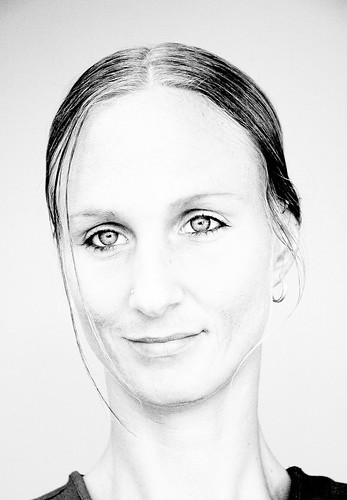With the arrival of brain scanning techniques like fMRI and PET-Scans the Neurosciences really took off. Until a few years ago the brain was still just a black box doing mysterious things and the only clues we got as to it's inner workings was done by observing the output it produced.
That's why there are still some who think that there are pain fibres in the body or specific pain centers in the brain. Anatomy and all the other sciences had nothing else to work with and postulated their findings as the "only truth".
Today we know that pain is a multidimensional problem - it has biological causes and consequences, psychological components and acts itself out in a complex social environment.
It's not longer sufficient to draw a picture of a boy burning his foot and following a line to his brain that represents the pathway the pain travels to be a successful therapist.
In order to be able to treat pain - especially chronic pain conditions - you have to be aware of all the components of the pain experience. The best approach to date to describe this complex interplay of different fields and specialties is the so-called "Biopsychsocial Model" (of Health and Illness).
It postulates that in a lot of situations the pain itself isn't the biggest problem - but the way the person in pain or those around him/her perceive and deal with the pain. This goes all the way from family members who offer too much help to doctors and therapists who don't take the patient seriously and even society as a whole when it comes to things like sick leave and sick pay.
Let's look at some of the parts that make up the pain experience:
The biology is very complex - from nerves to neurotransmitters and even specific genes that make some people more likely to experience (chronic) pain.
These are the stages an acute trauma goes through:
Tissue is damaged - leading to local inflammation to initiate the healing response; the immune system is activated to combat infection, a general and short term stress response is activated to enable us to get away from the pain quickly and to prevent further damage.
In this case - acute pain - nociceptive signals are sent to the spinal cord that modifies these signals according to their importance and sends them up to the brain for further processing. At the spinal cord level reflexes kick in - stereotypical motor patterns to protect the limb or the body.
The brain - based on experience and the circumstances the trauma occurs in decides whether or not to "label" the incoming signals as "pain producing signals". If for instance you are in a serious car accident there are more important things than the abrasions or contusions you have - the brain is more concerned with your survival - hence people after serious injuries don't feel any pain - what we call "shock". The nociceptive signals are all there all right - as are the other responses your body initiated to repair the damage - but no pain - at least initially.
If all goes well the damage is eventually repaired, the stress response is shut of very quickly since it is only useful during the traumatic event itself, nociception stops and the pain goes away.
This short outline is already able to give us a lot of clues as to what and where things can go wrong after we have hurt ourselves. The most important thing however is that the biological part is only one piece of the pain experience. As we have seen it's not enough to have nociception - you need a brain to process that information; and if that brain decides to ignore the peripheral input it can do so. It can also decide to produce pain without nociception.
This is where the biopsychosocial model comes in - it recognizes that pain really is an experience that has different factors that contribute to it.
I think most people can relate to the fact that pain is especially painful after we have done something really really stupid - it hurts more because we are ashamed:






